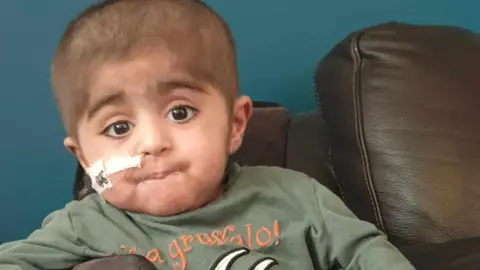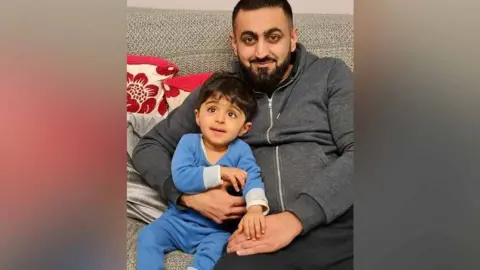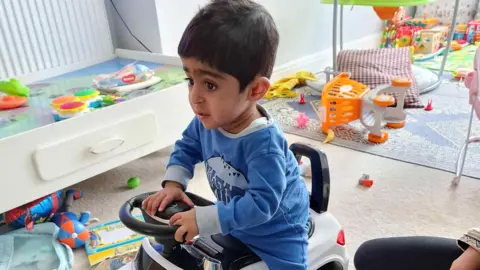Boy's life saved after 'death sentence' disease
 PA Media
PA MediaA boy with an ultra-rare immune disease which can carry a "death sentence" is starting to live a normal life after taking part in a groundbreaking gene therapy trial.
Eisa, from Reading, now enjoys playing football and can attend school - something his family never dreamed possible before the treatment.
The four-year-old was born with a severe form of leukocyte adhesion deficiency 1 (LAD-1) which is a rare, inherited disorder that disrupts the immune system's ability to fight infections.
Father Safdar said "cuddly and friendly" Eisa was "better than I could have ever thought he would be" after taking part in the trial.
 PA Media
PA MediaEisa was born during the pandemic, but his parents quickly realised something was wrong.
Mr Safdar said his son "didn't seem right" and an infection led to him being seen in three different hospitals, ending up at Great Ormond Street Hospital (GOSH).
He said: "Great Ormond Street told us they couldn't find a bone marrow match so they offered the gene therapy, I said 'if that's the only option they have, we have to do it'.
"Since then, because of this treatment, he has actually been able to fight infections himself.
"Great Ormond Street saved his life. He wouldn't be able to have the life he has now without those services."
Eisa, one of three siblings, had his treatment in January 2021 when he was 10 months old.
Professor Claire Booth, consultant paediatric immunologist at GOSH, said: "From previous studies on patients with this condition, if you have less than 2% expression, it's essentially like a death sentence without any treatment."
 PA Media
PA MediaDoctors were concerned Eisa was in a "catch-22" situation as he needed treatment for a problem with his heart, but LAD-1 caused problems with wound healing.
He could not have the operation before the gene therapy.
The new gene therapy works by modifying the patient's own cells to help them create the missing protein needed to help the body fight infection.
These are then returned to the patients which helps them to develop a working immune system.
Safdar said: "How he is now is better than I could have ever thought he would be - I never thought he would be able to walk, the next thing for us will be talking."
Prof Booth said the success of the trial opens doors for gene therapy to be used in a number of conditions, including cancer and muscular dystrophy.
You can follow BBC Berkshire on Facebook, X, or Instagram.
